by Elisa Zied | May 18, 2021 | books, fiction, VCFA, writer, writing, young adult books
Words Composed of Sea and Sky (Running Press Kids/Hachette, 5/25/21) by debut YA novelist Erica George had me at the gorgeous title, and stunning cover in hues of yellow and blue. But the novel itself more than lived up to my every expectation. George’s beautiful poetry and prose, the dual timelines, the evocative setting (Cape Cod), and the engaging and interwoven stories of two poets—Michaela Dunn and Leta Townsend—told in the current day and in the 1800s, respectively, make this a strong and worthwhile read. And if you’re a fan of layered characters and some swoon, this one’s for you.
I had the pleasure of doing a Q and A with George. Full disclosure: we first met when we shared a workshop at Vermont College of Fine Arts. I knew then of George’s talent and am thrilled for her debut and to share more about her novel and writing life.
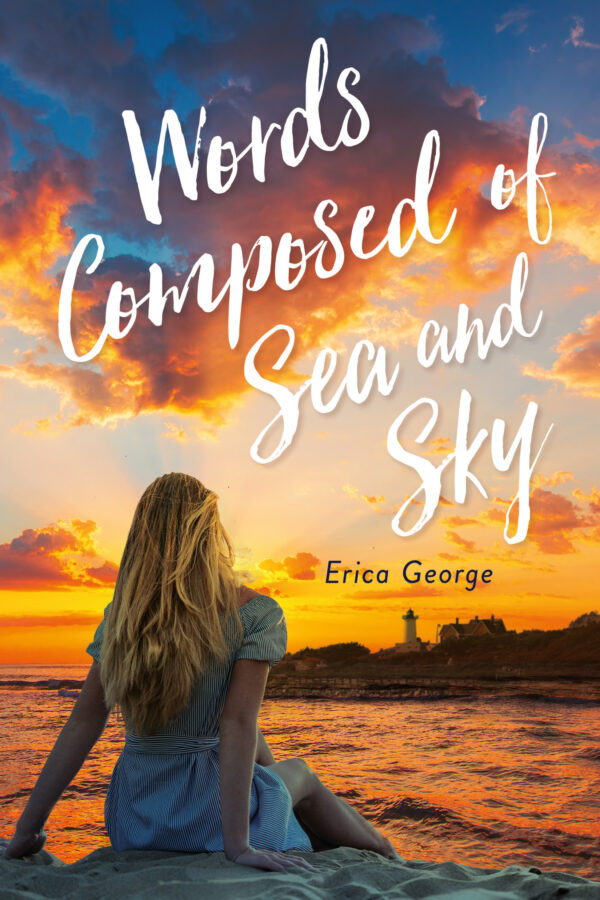 EZ: Was there a moment in time you discovered you were a writer, or was it something you’ve always done without thinking much about it?
EZ: Was there a moment in time you discovered you were a writer, or was it something you’ve always done without thinking much about it?
EG: Writing is something I’ve always done. There has never been a point in my life where I haven’t written (unless I wasn’t physically capable yet!), and there has never been a moment where I didn’t know that I was going to be an author.
EZ: What lured you to write fiction for children and young adults?
EG: I definitely think that being a teacher has made me gravitate toward writing for young people. I remember being a kid and trying to enjoy the books that were assigned to me in school, but also desperately wanting books that spoke to me (and were more interesting, let’s be honest!). Writing for young people is an honor I work hard to live up to.
EZ: How has your creative writing fit into your teaching life, and how has teaching/working with students informed your writing?
EG: They’re absolutely intertwined. I value student choice in reading and writing (as often as I can) in my classroom, so we’re always discussing what we’re reading or which author has a new book coming out. If I’m being honest, I would really have to think about the last adult book that I’ve read! There’s always a middle grade or young adult novel on my nightstand or in my bag.
EZ: You’re a candidate for an MFA at Vermont College of Fine Arts in the Writing for Children and Young Adults. What were your motivations for wanting to study at VCFA and how has the experience impacted your writing and career?
EG: Two of my critique partners actually have their MFAs from VCFA in Writing for Children and Young Adults, and they couldn’t say enough about the program. After doing my research, I knew that I wanted a degree that would not only benefit my writing career, but also instruct my teaching. There are so many topics we discuss at VCFA during workshops and seminars that I always jot down so that I remember to bring it up in a lesson or in conversation with my students.
EZ: What was the spark for, and trajectory of, your debut young adult novel, Words Composed of Sea and Sky?
EG: I think the initial spark began when I was thirteen (let’s not discuss how long ago that was!). I started writing about one of the characters in Words Composed of Sea and Sky, Captain Benjamin Churchill, when I was in middle school, and he hasn’t left me since then. He’s weaved his way in and out of books, trying to find which story belongs to him, and it didn’t all come together until the summer of 2018 when I decided I wanted to write a book about two female poets from two separate centuries, and suddenly he just belonged. He had an effect on both of my main characters (for better or for worse!)
EZ: What have been the best parts of being a debut author so far (being a 21der etc.), and what’s next for you?
EG: Being a part of the debut process with my fellow 21ders has been a dream. I’m so lucky to be a part of a group with so many talented, driven, and supportive authors. Currently, I’m in the middle of revisions for my second novel, a YA contemporary called The Edge of Summer, coming out with Little, Brown BFYR in summer of 2022. It’s about a girl named Coriander who spends her summer on Cape Cod completing a marine biology internship all while she copes with the unexpected loss of her best friend, first love, and rescuing a humpback whale from entanglement.
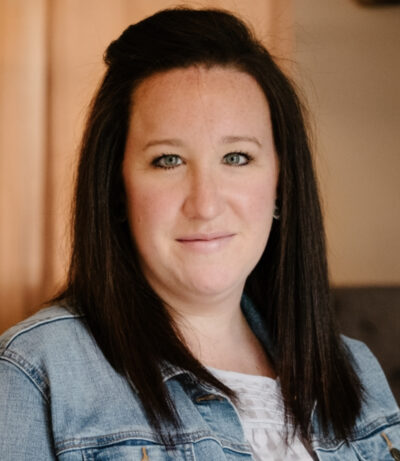 EZ: If you had to give advice to writers about craft, and the profession, what would it be? (Or what was the best advice for either you’ve received?)
EZ: If you had to give advice to writers about craft, and the profession, what would it be? (Or what was the best advice for either you’ve received?)
EG: I think that the best advice that I’ve received and that I would pass on (and it works every time), is to make sure you always have something you could be working on. There is so much waiting in the publishing industry! So much. It’s a constant game of “hurry up and wait,” and sometimes the waiting can be absolutely painful. What makes it go by more quickly is working on something new—focusing your energy on something that’s within your control.
EZ: Who are some of your favorite authors? Any favorite recent reads/books on your nightstand that you’re excited to get to?
EG: Such a good question! I love Leigh Bardugo, Elizabeth Acevedo, Jennieke Cohen, Jeff Zentner, Laura Taylor Namey, Jason Reynolds, Gita Trelease, Joy McCullough, (and let’s not forget Jane Austen!). The list goes on and on. This is not at all exhaustive! Currently on my nightstand, I’m reading Don’t Call the Wolf by Aleksandra Ross.
EZ: Where do you do most of your writing/what are the conditions that are most ideal for you? And if you could write anywhere, where would you go—and what would that day look like?
EG: My typical writing conditions are in my office with soft music playing, a lit candle, and my dog snoozing next to me. These are not my ideal writing conditions, though! Inevitably when I write from home, I find something to distract me from getting my words down. I really enjoy writing in libraries or coffee shops, or even writing at a friend’s house. Anywhere really, as long as the only thing I have to focus on is writing.
EZ: What’s next for you, and how can readers/educators learn more about your work?
EG: Words Composed of Sea and Sky hits shelves with Running Press Kids/Hachette on 5/25/21, and you can preorder using this link.
You can find more information about Erica, my books, and upcoming events on my website, www.ericageorgewrites.com
Erica George is a writer of young adult fiction. She is a graduate of The College of New Jersey with degrees in both English and education, and is currently an MFA student at Vermont College of Fine Arts. She resides in scenic northern New Jersey, but spends her summers soaking up the salty sea air on Cape Cod.
by Elisa Zied | Oct 18, 2020 | books, writer, writers, writing
“This collection of poems and photos beautifully illustrates the complex emotions of living in New York during a global pandemic.” ~ Kelly Ripa, Entrepreneur, Host, Actress and Producer
Living in New York City during a global pandemic has been some combination of surreal, dispiriting, challenging and inspirational. While many of us have yet to fully process and make sense of what has transpired on our usually vibrant streets and in our parks over these last several months—especially in its early epicenter days—several artists have continued to create.
Nicole Freezer Rubens, a native New Yorker, owner of a boutique design firm, and mother of three, is one such artist. Through her dual passions—poetry and photography—she has beautifully and poignantly chronicled her personal experience during the pandemic and shown its impact on our beloved city in her gorgeous debut, “The Long Pause and The Short Breath” (Three Tomatoes Publishing, 2020).
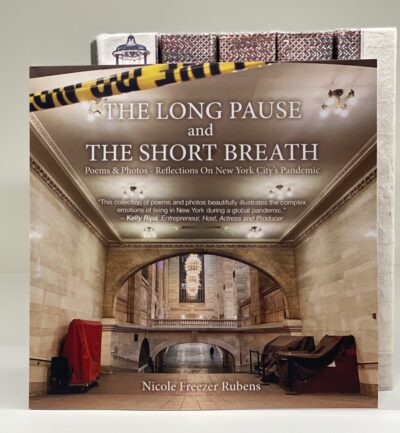 I had the pleasure of doing an Q & A with Nicole about her new book, one that gives readers a highly personal tour of the city during a moving and unforgettable time.
I had the pleasure of doing an Q & A with Nicole about her new book, one that gives readers a highly personal tour of the city during a moving and unforgettable time.
EZ: I’ve been enjoying your vibrant and gorgeous Instagram photos for years. What was it about the pandemic that made you take the plunge— not only to create a book of photos, but one that includes poetry too?
NFR: I have been writing poetry since I was 9 years old. Right after I read Shel Silverstein’s Where the Sidewalk Ends, I set out to create my first book of rhyming poems, bound in a denim blue loose leaf and including images and drawings. In college and after I studied poetry writing as well and throughout my life I have always written for myself. When the world shifted at the beginning of the global pandemic I was quite relieved that we were allowed to walk outside for exercise. Seeing our city empty out inspired me to write, often as I was walking in Central Park. With little else to do, I walked and explored a lot as a means to investigate and process what was happening. The poems began to accumulate after a few weeks. Not only did writing become therapeutic for me, but I began to feel a responsibility to myself to chronicle the events and repercussions of Covid-19 as a diaristic record for the future.
EZ: What was your process in taking and choosing photos specifically for the book, and how did you tackle the poetry (and do the photos pair with the poems or did you see them as separate if not related entities)?
NFR: I am generally a little obsessed with Instagram and love taking photos on my phone everywhere I go. Exploring new neighborhoods and photographing them is absolutely one of my favorite pastimes. When Covid prevented me from doing that, I began to take long walks to relatively local neighborhoods I had overlooked before. You ask an interesting question Elisa. The photos and poems were created as completely separate entities for me. Although they evolved simultaneously, I did not think to use them together until I realized that the poetry I had accumulated, was
becoming a body of work that could be a book. Once I finished writing I sat down to pair the poems with photos. This flowed naturally since they were captured to record the same subject matter of our city under lockdown.
EZ: So many writers and other artists have thrived during the pandemic, but many have also struggled (present company included). Did putting the book together help you cope and stay motivated during such tough times, or was it a struggle (or something in between)?
NFR: I have always had an easier time writing from the lows than from the highs. I have constantly used poetry writing as a coping mechanism. I realize as I write this, that that first binder of poems I wrote at nine, was written right after my parents got divorced. I am lucky because writing is a hobby, so I did not have the pressure to produce as so many artists do. I can say that on the days that I wrote a poem, I felt the satisfaction of productivity and that was personally rewarding and pushed me to continue to write. My interior design work was on hold for six months. My three grown children were home for three months, and cooking and cleaning occupied my days but did not satisfy me. I am very grateful that I was able to use some of my time on pause to create something long-lasting and that is important to me. It was not a struggle at all, it was more of a blessing for which I am grateful.
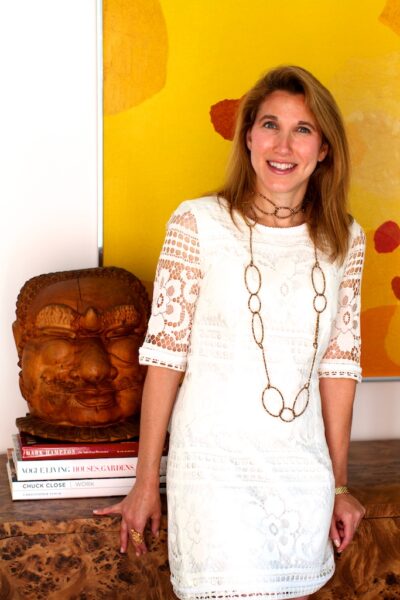 EZ: How would you sum up what you’ve experienced living in New York City during the pandemic, and what are some of the images or poems from the book that best encapsulate or capture the pandemic for you?
EZ: How would you sum up what you’ve experienced living in New York City during the pandemic, and what are some of the images or poems from the book that best encapsulate or capture the pandemic for you?
NFR: Overall, one of the most powerful aspects of being in NYC during the pandemic was bearing witness to the positive side of humanity. The Clap Because We Care round of cheering and applause that happened all over NYC at 7pm daily was always a bright spot in my day. Hearing, seeing and feeling the gratitude for and supporting the tireless healthcare workers and essential workers reminded me of the fundamental goodness in people and amplified my love for my city. Being able to scream for those two minutes, sandwiched between my family and neighborhood as we clapped, was a personal and helpful release. I also realized early on how fortunate I was in so many ways, including having bonus time together with my family. Although I felt frightened and deeply sad and frustrated, sharing that universal sense of loss with the world over made it easier to cope.
The cover image Off Limits of an empty Grand Central Station and You Are!! which shows a hand drawn heart-shaped message of strength taped to a lamppost truly define the times for me. Selecting a poem might be like picking a favorite child, but I can say that after I wrote March 30, 2020 about the field hospital being erected so unnaturally in Central Park, I felt I was on my way to having the writing soothe me.
EZ: What advice has helped you create in the face of a pandemic or grief or any kind or loss? (Or what advice would you offer to other artists?)
NFR: That is a very personal question, and each individual and creation is a unique situation which is what keeps artwork so interesting to me. I was always taught to write what you know, and the same applies to photography. I believe if one uses her voice, she will create from her truth and then it will certainly be meaningful and authentic.
The Long Pause and The Short Breath is available on Amazon or wherever books are sold. (If you don’t see it at your favorite independent bookstore or on their website, please request it.)
More about Nicole Freezer Rubens: She studied studio art, art history, creative writing and photography. Following a career in the art world, she launched NFR Consulting. Since childhood she’s written poetry and taken photos. Her favorite current pastime is exploring new neighborhoods and posting her treasured finds on Instagram. You can follow Nicole on Instagram at @nfrconsult.
by Elisa Zied | May 20, 2020 | books, fiction, writers
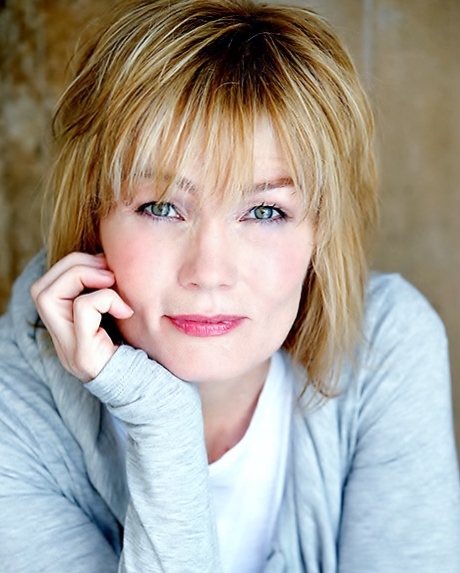 I am literally counting the minutes to read the sophomore novel of the amazing Kerry Kletter. Literally. Because I know East Coast Girls (MIRA, May 26, 2020) will be wonderful. Her writing is from the heart. Lyrical, poetic, painful, and beautiful. I expect nothing less from East Coast Girls.
I am literally counting the minutes to read the sophomore novel of the amazing Kerry Kletter. Literally. Because I know East Coast Girls (MIRA, May 26, 2020) will be wonderful. Her writing is from the heart. Lyrical, poetic, painful, and beautiful. I expect nothing less from East Coast Girls.
Here’s a description from Kletter’s website:
They share countless perfect memories—and one they wish they could forget.
Childhood friends Hannah, Maya, Blue and Renee share a bond that feels more like family. Growing up, they had difficult home lives, and the summers they spent vacationing together in Montauk were the happiest memories they ever made—campfires on the beach, salt-spray hair and the effervescent excitement of the bright future ahead. Then, the summer after graduation, one terrible night changed everything.
Twelve years have passed since that fateful incident, and during that time, their sisterhood has drifted apart, each woman haunted by her own lost innocence. But just as they reunite in Montauk for one last summer together, hoping to heal those wounds and find happiness once more, tragedy strikes again. This time it’ll test them like never before, forcing them to confront decisions they’ve each had to live with and old secrets that refuse to stay buried.
Told with lyrical prose and sharp insights into human nature, East Coast Girls unveils the dark truths that can threaten even the deepest friendships and the unconditional love that makes them stronger than ever.
I had the pleasure of doing an email Q & A with Kletter about the novel and her writing life. Here are the highlights:
EZ: You know I’m a big fan of your debut young adult novel, The First Time She Drowned. You had me at the first line (which I won’t spoil for others who haven’t yet read it). And I’m thrilled your sophomore novel, East Coast Girls, is out. What was the impetus to write it—and to write for an adult audience?
KK: First, thank you! You have been a wonderful champion of my first book and I can’t tell you how much I appreciate it.
You know when I published that book I felt such an outpouring of love and support from people from all aspects of my life and in particular the friends I grew up with on the east coast. Friends have always been a saving grace in my life and that support meant everything to me. I wanted to find a way to express my gratitude and so I decided to write a book that was, to me, a love letter to friendship. EAST COAST GIRLS is about a lot of other things as well—trauma, resiliency, compassion for our flawed humanity—but at its heart it’s about the beauty of lifelong friends.
As far as writing for an adult audience, my first book was technically considered a crossover novel—meaning that it might appeal to both young adults and adults so I didn’t really feel like I was leaping genres too much even though they are calling this my adult debut.
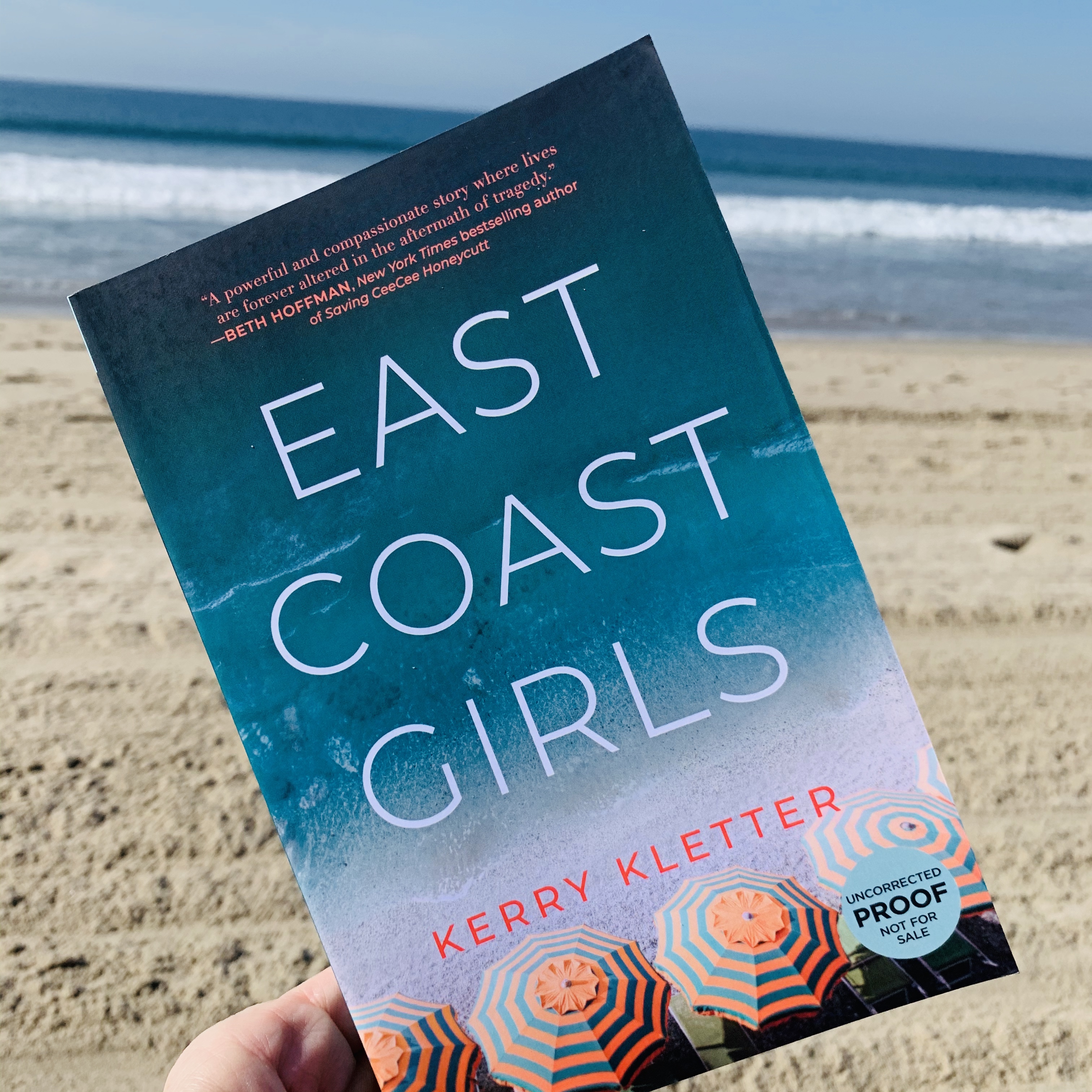 EZ: How was the process of writing East Coast Girls different from writing your first novel?
EZ: How was the process of writing East Coast Girls different from writing your first novel?
KK: I think second novels are harder in some way because now you have all the voices from the first book in your head—what sells, what readers like and don’t, what their expectations might be. It was tough to get past all of that and just write the story I wanted to tell.
EZ: What was the most challenging part of writing this novel in terms of craft and logistics?
KK: Having three narrators with three distinct personalities. Oy.
EZ: What was the best part of writing this novel?
KK: I think the thing I always like most about writing is that it allows me to grapple with questions I’m struggling with in my own life. In this book I was looking to answer two questions: “How do we acknowledge and accept the fragility of life and the fear of loss and still live and love fearlessly?” And then separately, “How do we cope with the fact that sometimes the people we love most cause us great pain and how do we know when to forgive and when to let go?” I feel like I learn by asking the question and letting the characters figure it out. Not that there are any easy answers, of course.
EZ: What do you need in terms of physical space and inspiration to sit down to write? And where and in what conditions do you do your best writing?
KK: A bed (my office), earplugs, laptop. I think I do my best writing after I’ve read really good writing. I’m always inspired by beautiful sentences.
EZ: What are some of your favorite recent reads?
KK: I loved Dear Edward by Ann Napolitano which I thought was beautiful and life-affirming and so carefully done. My Dark Vanessa by Kate Elizabeth Russell was a perfect book, just perfectly structured, absorbing, well written, honest. A lighter read I loved was Emily Henry’s Beach Read which is hilarious and swoony and has depth as well. It’s set to be a huge and well-loved book which thrills me because Emily happens to be an incredible person.
EZ: What novels are you most looking forward to diving into?
KK: I cannot wait for Stephanie Danler’s memoir Stray. I loved her first Sweet Bitter so much. I also really want A Star is Bored by Byron Lane, The Paris Hours by Alex George and Christina Clancy’s The Second Home. As for young adult novels, Jennifer Niven has a new one out in the fall called Breathless. I love everything she writes. And I’m looking forward to Laurie Elizabeth Flynn’s All Eyes on Her and Marisa Reichardt’s Aftershocks.
EZ: What most inspires your writing/story ideas?
KK: Honestly, mostly just life. Other books sometimes, but yeah mostly life.
EZ: How has the current pandemic affected your creative/writing life?
KK: I’m being surprisingly productive! Writing is such a focused activity—I use it to help regulate myself and forget the big problems of the world for a while. It gives me a sense of purpose and meaning as well.
EZ: When you’re not writing, how do you like to spend your time—pre-covid-19 and during the pandemic?
KK: Pre-covid—spending time with friends, running, surfing, skiing, reading, binging netflx. During covid—running (mask on!) writing, binging Netflix, and much-needed organizing of my apartment. And in both cases too much Twitter.
EZ: How can friends, family, other authors and fans support you and your work during the pandemic? Where can they find you online?
KK: Obviously there are much bigger problems in the world, but it is an unfortunate time to be releasing a book. It’s harder for new books to get traction when all the bookstores are closed, book tours and events cancelled, and there are no booksellers handselling your book or even opportunities for people to impulse buy off the shelf. I never want anyone to feel they have to do anything to support me, but if they wanted to I’d be thrilled of course if anyone bought the book or asked their local library to buy it if they haven’t yet. Beyond that, social media posts and recommendations to friends are incredibly helpful in spreading the word—my friends, fellow authors and readers have always been so amazing with that and I’m so grateful. And, of course, Amazon reviews are always helpful. Unless you hated the book in which case, not so much 😊.
I can be found on Instagram and Twitter as @Kkletter, and on Facebook under Kerry Kletter. My website is Kerrykletter.com.
EZ: What’s next for Kerry Kletter?
KK: Finishing the third book, trying not to go stir crazy, and awaiting YOUR first novel.
EZ: Where would you like people to buy your books?
KK: I want people to shop where they want to but, if they are able, I encourage them to buy from their local independent bookstore or from Bookshop.org which supports indies. Those stores really need us right now and I’m very worried about publishing if we lose them.
Read an excerpt of East Coast girls here.
by Elisa Zied | Sep 15, 2019 | books, fiction, writer, writers, writing, young adult books
Laura Taylor Namey is a woman on a mission. This dog loving, piano playing, former teacher is a mother of two and full time writer. She aspires to live in London someday, but right now is truly living the dream (and working her a** off) as the debut author of the brand new young adult novel, The Library of Lost Things (Inkyard Press, October 2019). Here’s a description of the novel from Goodreads:
From the moment she first learned to read, literary genius Darcy Wells has spent most of her time living in the worlds of her books. There, she can avoid the crushing reality of her mother’s hoarding and pretend her life is simply ordinary. But when a new property manager becomes more active in the upkeep of their apartment complex, the only home Darcy has ever known outside of her books suddenly hangs in the balance.
While Darcy is struggling to survive beneath the weight of her mother’s compulsive shopping, Asher Fleet, a former teen pilot with an unexpectedly shattered future, walks into the bookstore where she works…and straight into her heart. For the first time in her life, Darcy can’t seem to find the right words. Fairy tales are one thing, but real love makes her want to hide inside her carefully constructed ink-and-paper bomb shelter.
Still, after spending her whole life keeping people out, something about Asher makes Darcy want to open up. But securing her own happily-ever-after will mean she’ll need to stop hiding and start living her own truth—even if it’s messy.
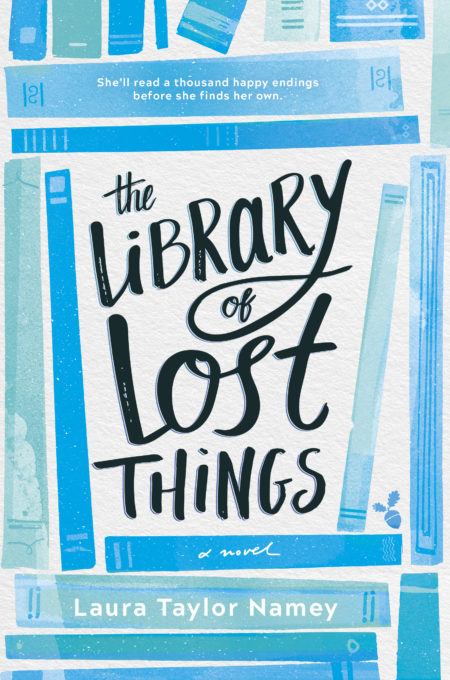 I had the pleasure of doing an email interview with my lovely friend whom I had the pleasure of meeting several years ago at a Society for Children’s Book Authors and Illustrators annual conference. Read on to learn about her writing journey and why she loves #pitchwars and her critique partners (not necessarily in that order).
I had the pleasure of doing an email interview with my lovely friend whom I had the pleasure of meeting several years ago at a Society for Children’s Book Authors and Illustrators annual conference. Read on to learn about her writing journey and why she loves #pitchwars and her critique partners (not necessarily in that order).
EZ: At what point in your life did you know you wanted to write for children and young adults? And when did you know you were a writer?
LTN: I have always felt like a natural writer, even if I didn’t have the logistics figured out until a few years ago. I am a former teacher, and I found myself using a lot of literature in my classroom lessons. I began to long for the chance to write my own stories. About five years ago, I started writing a young adult novel (this one will forever live in a drawer). I’d had no formal training, but I used that work to find out what I really did need to work on more. I got help, read a ton, and decided that I wanted to focus on the young adult age group. I love the emphasis on coming-of-age themes, high-concept storytelling, and exploring complex and relevant topics.
EZ: What has been the best part of transitioning from a pre-published to a published author?
LTN: I have such admiration and respect for career authors, and creators who consistently come up with beautiful and compelling content. Being able to take my small place beside them, with the word Published next to my name, is an incredible experience.
EZ: How do you fit writing into the rest of your life (and fit the rest of your life into your writing)?
LTN: I am blessed to have a supportive family, and the opportunity to write full time right now. I work best in the morning, so having a new teen driver in my home has helped to free up some of my time to build up my word count before lunch time. I take breaks to take care of my home and family, and to squeeze in a workout. Admittedly, I don’t watch a lot of TV. I am usually writing, or reading during down time.
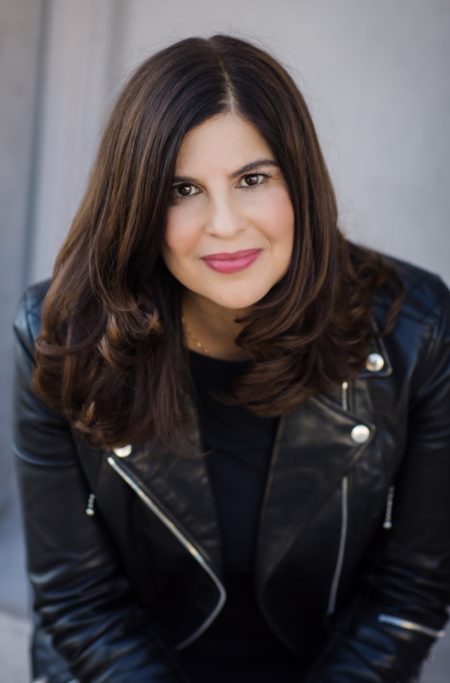 EZ: What are your favorite kinds of books to read, and how do they inspire your writing?
EZ: What are your favorite kinds of books to read, and how do they inspire your writing?
LTN: I love books that stick with me long after I’ve finished them. I enjoy a wide variety of authors, age groups, and genres. Make me care, feel, and want to chat about your book all day and that’s my idea of a winner. I believe all writers need to actively read other writers. I am most inspired by other authors in the areas of scope and opportunity. There are so many ways to attack and deconstruct even the same topic in drastically different ways with differing points of view. Reading more only confirms my belief that so many possibilities lay in front of our pens.
EZ: Can you describe your experience with #pitchwars on Twitter?
LTN: I was a 2017 #pitchwars unofficial mentee. Besides working with a fantastic mentor who became the first person to work on THE LIBRARY OF LOST THINGS, #pitchwars brought me into a supportive community of writers. This is the real prize in any online contest. Put your work out there. Meet fellow writers. Team up and share and hone your craft together, and know that you are not alone in your struggles and hopes.
EZ: You are a big fan of your critique partners. How did you meet them, and what makes your partnership work? What advice do you have for other writers who want to work with critique partners or groups?
LTN: I have two fantastic critique partners that work with me almost every day. We met because we were all 2017 #pitchwars unofficial mentees. We began chatting privately on Twitter DM, and became lifelong friends through sharing our work and supporting one another. What sets our group apart is that we don’t wait until we finish a novel to edit or weigh in. We are always working together on our three individual manuscripts. We plan together from idea-up, talk through issues, name towns or characters, and share snippets of our writing as we go. When I get stuck, I can ask a question directly from the point of concern. My partners already have such a deep knowledge of my manuscript, plot and theme, and character arcs, that they can weigh in quickly. And I do the same for their work.
For those who would like to join or form a group like this, hang out on private writer’s boards or the community groups associated with social media programs, such as #pitchwars. Put yourself out there. It might take some time, but you will find your people. It’s okay if you try out a CP and that person isn’t quite right for you. Keep sharing and investing in others.
How will you know if you are collaborating with the best people for you? Your perfect CPs will be similar enough to you and your work that they share a taste level and basic skill level. But they should be different enough that they can expand your scope and contribute to your growth. A good CP walks beside you, while also possessing the tools to push you. My CPs and I are the best of friends, but when it’s time to work, we give tough feedback with love.
EZ: What are you currently working on? And where do you see yourself in five years?
LTN: Right now I am almost finished with the draft of a secret junior novel. I’m hanging out in the young adult contemporary world for a while, and hope to have a few books side-by-side on shelves in five years.
To learn more about Laura Taylor Namey and The Library of Lost Things, visit her website. You can also find her on Twitter and on Instagram. Stay tuned for Namey’s sophomore novel, A Cuban Girl’s Guide to Sweaters and Stars (Simon & Schuster, Fall ’20) and future titles as well!
by Elisa Zied | May 11, 2019 | books, fiction
The Art of Breaking Things (Viking Books for Young Readers, June 2019) by debut author Laura Sibson tells the story of 17-year-old Skye, an artist set to leave her small town and attend art school once she figures out how to survive senior year and confront the trauma she experienced several years earlier. Here’s a brief description of the novel from Sibson’s website:
Weekends are for partying with friends while trying to survive the mindnumbingness that is high school. The countdown to graduation is on, and Skye has her sights set on escaping to art school and not looking back.
But her party-first-ask-questions-later lifestyle starts to crumble when her mom rekindles her romance with the man who betrayed Skye’s trust and boundaries when he was supposed to be protecting her. She was too young to understand what was happening at the time, but now she doesn’t know whether to run as far away from him as possible or give up her dreams to save her little sister. The only problem is that no one knows what he did to her. How can she reveal the secret she’s guarded for so long?
With the help of her best friend and the only boy she’s ever trusted, Skye might just find the courage she needs to let her art speak for her when she’s out of words. After years of hiding her past, she must become her own best ally.
(more…)
by Elisa Zied | Apr 27, 2019 | books, fiction, writers, young adult books
When I heard about J.B. Howard’s debut novel, When I Was Summer (Viking Books for Young Readers, April 30, 2019) and saw the absolutely gorgeous book cover, I began counting the days until it would be in my hands. Intrigued by the promise of music and mystery (maybe some mating too?!), I pre-ordered the novel and anxiously await its arrival. If it turns out to be anything at all like its author–because what work of fiction doesn’t include at least part of the soul from which it comes–I can’t imagine it’ll be anything less than awesome.
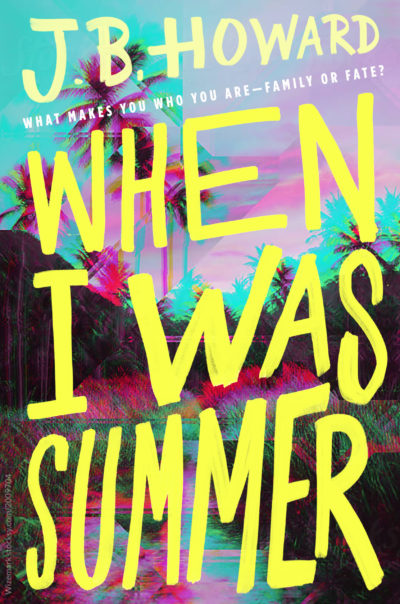 Here’s a description of When I Was Summer from the publisher:
Here’s a description of When I Was Summer from the publisher:
A relatable novel about unrequited love, rock ‘n’ roll, and what you find when you go searching for yourself.
Sixteen-year-old Nora Wakelin has always felt like an outsider in her own family. Her parents and older sister love her, but they don’t understand anything about her: not her passion for music, not her all-encompassing crush on her bandmate Daniel (who is very much unavailable), not her recklessness and impulsiveness. Nora has always imagined that her biological mother might somehow provide the answer as to why she feels like such an outsider.
(more…)
 EZ: Was there a moment in time you discovered you were a writer, or was it something you’ve always done without thinking much about it?
EZ: Was there a moment in time you discovered you were a writer, or was it something you’ve always done without thinking much about it? EZ: If you had to give advice to writers about craft, and the profession, what would it be? (Or what was the best advice for either you’ve received?)
EZ: If you had to give advice to writers about craft, and the profession, what would it be? (Or what was the best advice for either you’ve received?) I had the pleasure of doing an Q & A with Nicole about her new book, one that gives readers a highly personal tour of the city during a moving and unforgettable time.
I had the pleasure of doing an Q & A with Nicole about her new book, one that gives readers a highly personal tour of the city during a moving and unforgettable time. EZ: How would you sum up what you’ve experienced living in New York City during the pandemic, and what are some of the images or poems from the book that best encapsulate or capture the pandemic for you?
EZ: How would you sum up what you’ve experienced living in New York City during the pandemic, and what are some of the images or poems from the book that best encapsulate or capture the pandemic for you? I am literally counting the minutes to read the sophomore novel of the amazing Kerry Kletter. Literally. Because I know East Coast Girls (MIRA, May 26, 2020) will be wonderful. Her writing is from the heart. Lyrical, poetic, painful, and beautiful. I expect nothing less from East Coast Girls.
I am literally counting the minutes to read the sophomore novel of the amazing Kerry Kletter. Literally. Because I know East Coast Girls (MIRA, May 26, 2020) will be wonderful. Her writing is from the heart. Lyrical, poetic, painful, and beautiful. I expect nothing less from East Coast Girls.  EZ: How was the process of writing East Coast Girls different from writing your first novel?
EZ: How was the process of writing East Coast Girls different from writing your first novel? I had the pleasure of doing an email interview with my lovely friend whom I had the pleasure of meeting several years ago at a
I had the pleasure of doing an email interview with my lovely friend whom I had the pleasure of meeting several years ago at a  EZ: What are your favorite kinds of books to read, and how do they inspire your writing?
EZ: What are your favorite kinds of books to read, and how do they inspire your writing? Here’s a description of When I Was Summer from
Here’s a description of When I Was Summer from
Recent Comments